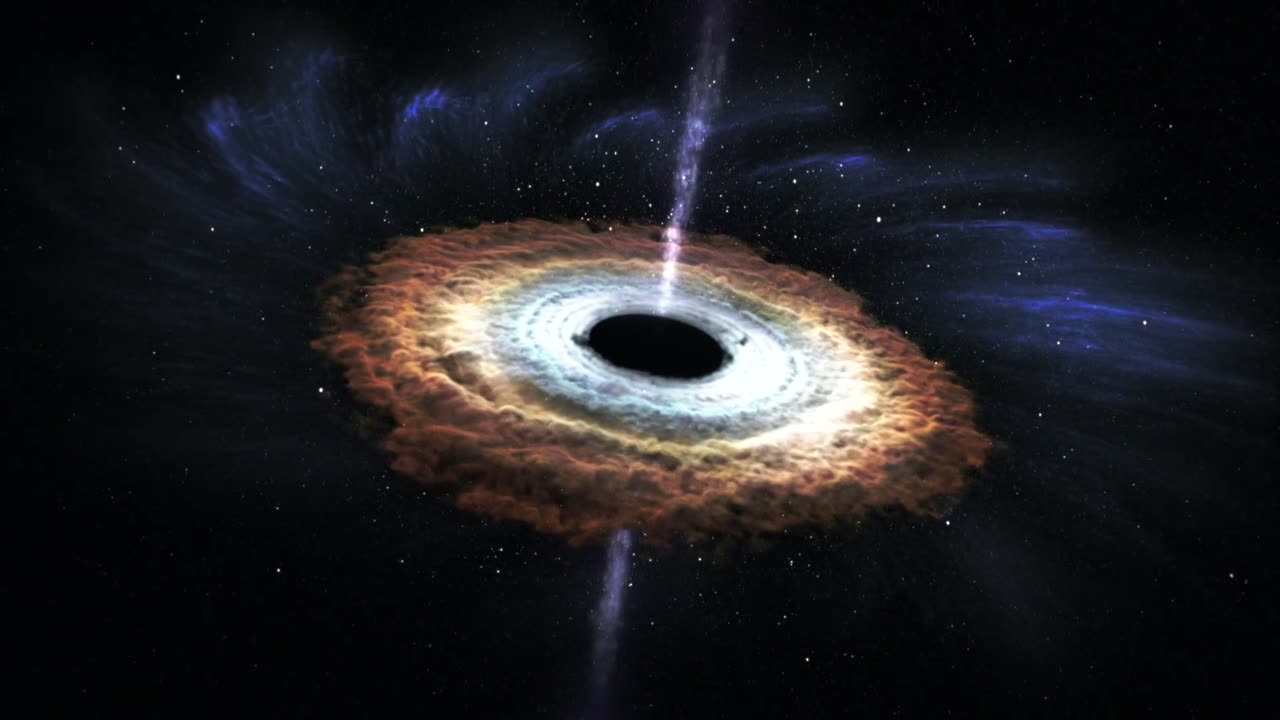Premium Only Content

NASA|Massive black hole shreds passing stars
NASA’s massive black hole shreds passing stars is a phenomenon that occurs when a star gets too close to a supermassive black hole and is torn apart by its immense gravitational force. This event, also known as a tidal disruption, produces a bright X-ray flare that can last for years. NASA’s Chandra X-ray Observatory, Swift Gamma-ray Burst Explorer, and ESA/NASA’s XMM-Newton have observed several examples of this phenomenon in different galaxies, such as ASASSN-14li in PGC 04323412. These observations help astronomers to study the properties of black holes and their effects on their surroundings. Some of the key features of this phenomenon are:
The star is stretched and distorted by the tidal forces of the black hole, forming long filaments of gas that fall toward the black hole or are ejected into space.
The gas that falls toward the black hole forms a hot, rotating disk that emits X-rays. The inner region of the disk is very hot and drives a wind of material away from the disk.
The X-ray spectrum of the disk reveals information about the temperature, density, and composition of the gas, as well as the spin and mass.
-
 LIVE
LIVE
The Bubba Army
22 hours agoMinneapolis Shooter Story Unfolds! - Bubba the Love Sponge® Show | 8/28/25
3,108 watching -
 26:00
26:00
DeVory Darkins
1 day ago $11.62 earnedDemocrat Mayor HUMILIATES himself during painful interview as Trump makes SHOCKING Announcement
35.4K91 -
 22:14
22:14
Ohio State Football and Recruiting at Buckeye Huddle
1 day agoOhio State Football: Everything Steve Sarkisian Said About the Buckeyes This Week
19K -
 1:19:55
1:19:55
TruthStream with Joe and Scott
1 day agoLisa, Michelle and Carole join Joe for Healing and Inspiration. Next healing will be on Aug 28th at Noon and 4pm eastern https://www.balancingbodyandsoul.com/?ref=TRUTHSTREAMSHOW
12.1K1 -
 10:32
10:32
Nikko Ortiz
17 hours agoFunniest Fails Of The Month
36.9K4 -
 28:59
28:59
The Jack Brewer Show
14 hours agoThe Jack Brewer Show S1 EP5 Charles Duke Tanner on Redemption, Fatherhood & Second Chances #podcast
6.37K -
 15:33
15:33
Bearing
1 day agoSEPTUM RING THEORY 💥 Are Nose Ring Girls ALL INSANE LIBERALS?! 💀🤣
12K57 -
 1:18
1:18
WildCreatures
2 days ago $1.22 earnedTourists unintentionally come face to face with jaguar in Brazil's Pantanal
8.24K15 -
 40:36
40:36
State of the Second Podcast
18 hours agoWhy Training Is an Investment in Your Life (ft. Tre’Von Barber)
10.2K -
 1:03:43
1:03:43
Dialogue works
1 day ago $3.11 earnedCol. Larry Wilkerson: Warning Signs Everywhere: U.S. on the Verge of Disaster
26.6K11